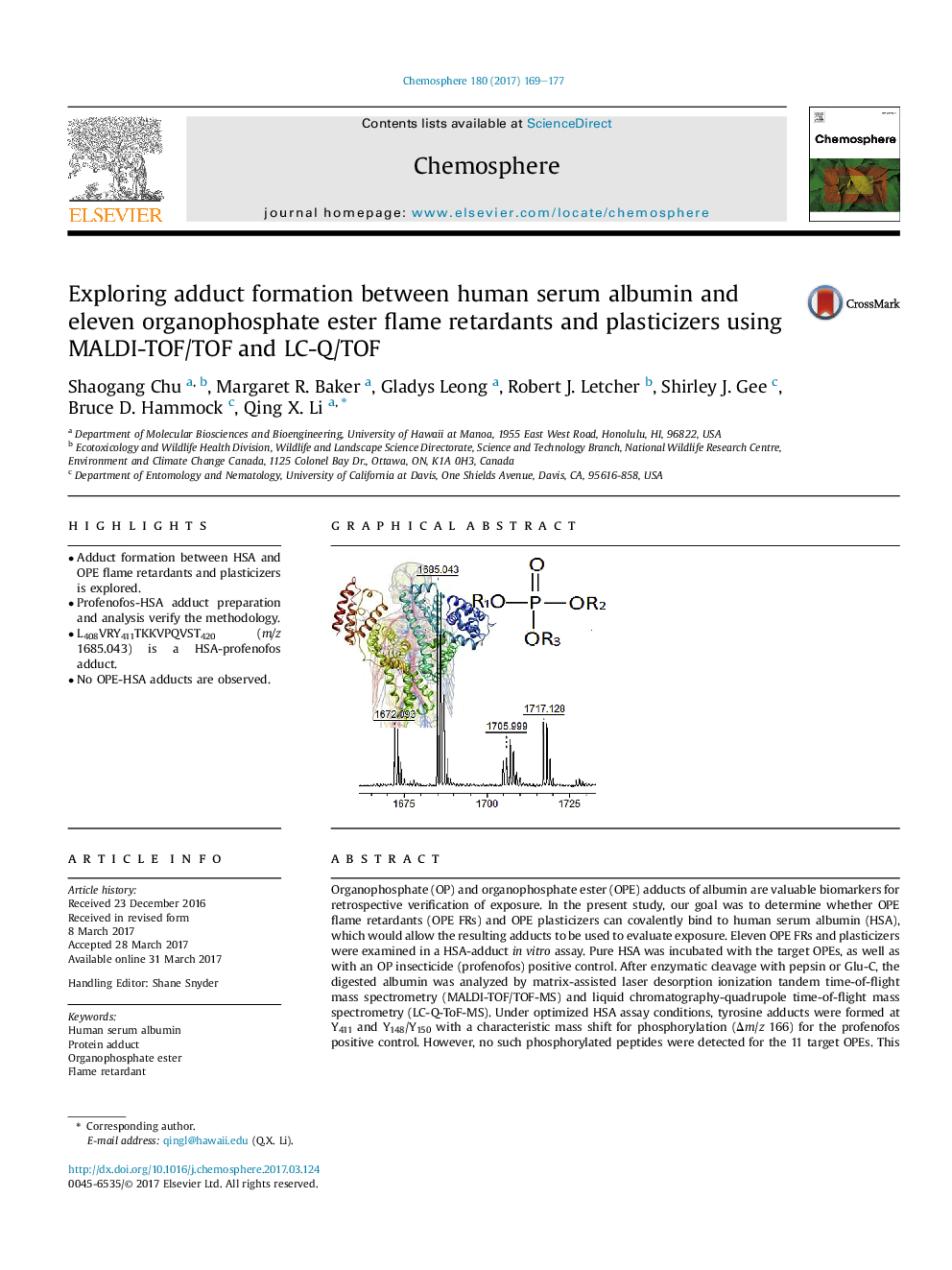| Article ID | Journal | Published Year | Pages | File Type |
|---|---|---|---|---|
| 5746139 | Chemosphere | 2017 | 9 Pages |
â¢Adduct formation between HSA and OPE flame retardants and plasticizers is explored.â¢Profenofos-HSA adduct preparation and analysis verify the methodology.â¢L408VRY411TKKVPQVST420 (m/z 1685.043) is a HSA-profenofos adduct.â¢No OPE-HSA adducts are observed.
Organophosphate (OP) and organophosphate ester (OPE) adducts of albumin are valuable biomarkers for retrospective verification of exposure. In the present study, our goal was to determine whether OPE flame retardants (OPE FRs) and OPE plasticizers can covalently bind to human serum albumin (HSA), which would allow the resulting adducts to be used to evaluate exposure. Eleven OPE FRs and plasticizers were examined in a HSA-adduct in vitro assay. Pure HSA was incubated with the target OPEs, as well as with an OP insecticide (profenofos) positive control. After enzymatic cleavage with pepsin or Glu-C, the digested albumin was analyzed by matrix-assisted laser desorption ionization tandem time-of-flight mass spectrometry (MALDI-TOF/TOF-MS) and liquid chromatography-quadrupole time-of-flight mass spectrometry (LC-Q-ToF-MS). Under optimized HSA assay conditions, tyrosine adducts were formed at Y411 and Y148/Y150 with a characteristic mass shift for phosphorylation (Îm/z 166) for the profenofos positive control. However, no such phosphorylated peptides were detected for the 11 target OPEs. This negative result suggests that these OPEs have very different affinities from the OP insecticide. They are less reactive or they may specifically interact with other proteins.
Graphical abstractDownload high-res image (92KB)Download full-size image
